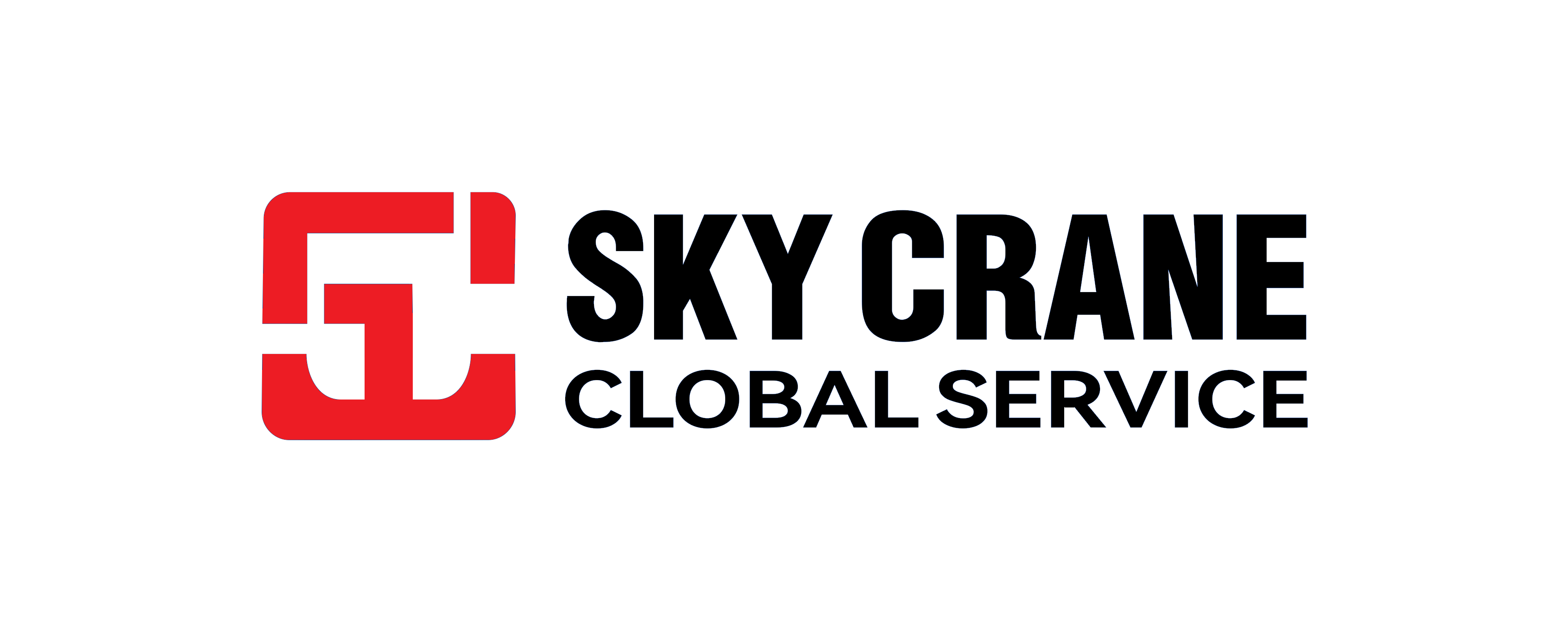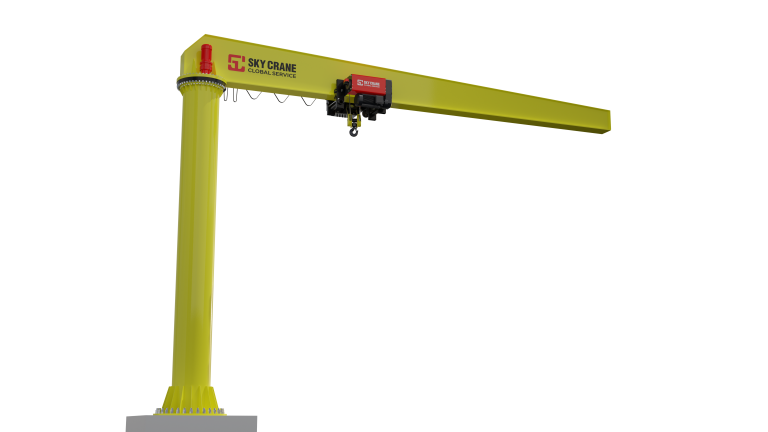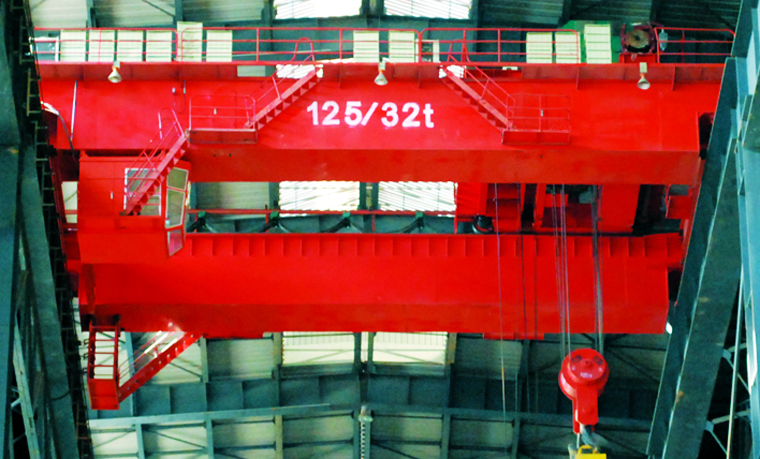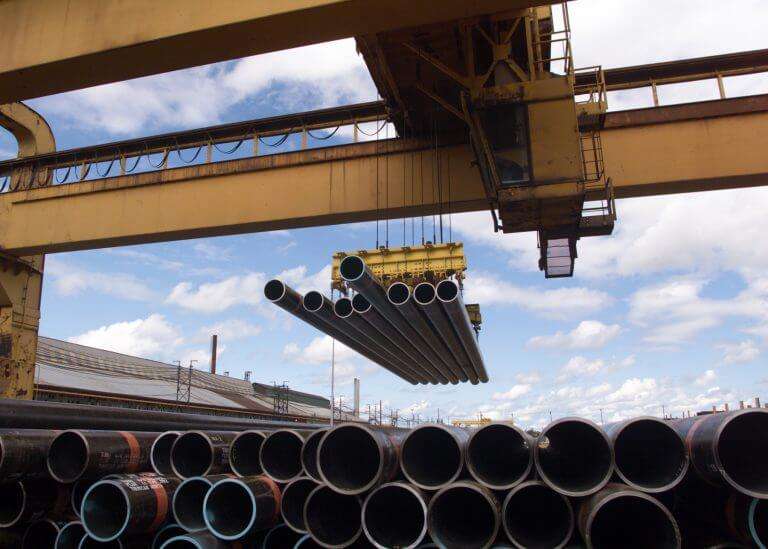Table of Contents
Pomaikaʻi o ka hoʻohana ʻana i nā mea hoʻokiʻekiʻe kiʻekiʻe no nā hana awa
ʻO nā hiʻohiʻona kiʻekiʻe e ʻimi ai i nā lako hoʻokiʻekiʻe mai ka hale hana Kina maikaʻi loa
I ka hiki ʻana mai i nā mea hoʻokiʻekiʻe no nā awa, ʻo ka ʻimi ʻana i ka hale hana Kina maikaʻi loa hiki ke hana i nā ʻokoʻa āpau i ka hōʻoia ʻana i ka pono, palekana, a me ka hilinaʻi. Me ka piʻi nui ʻana o nā mea hoʻokiʻekiʻe kiʻekiʻe i ka ʻoihana moana, pono e ʻike i nā hiʻohiʻona e nānā ai i ke koho ʻana i kahi mea hoʻolako. Ma kēia ʻatikala, e kūkākūkā mākou i nā hiʻohiʻona kiʻekiʻe e noʻonoʻo ai i ke koho ʻana i nā mea hoʻokiʻekiʻe mai ka hale hana Kina maikaʻi loa.
ʻO kekahi o nā hiʻohiʻona koʻikoʻi e nānā ai i nā mea hāpai ʻana ʻo ia ka lōʻihi. ʻO nā awa nā wahi kaʻa nui me nā ukana kaumaha e hāpai ʻia a neʻe mau. No laila, he mea koʻikoʻi ke koho ʻana i nā mea hana hiki ke kū i ka lole a me ka waimaka o ka hoʻohana ʻana i kēlā me kēia lā. Hoʻohana nā hale hana Kina maikaʻi loa i nā mea waiwai kiʻekiʻe a me nā ʻenehana hana kiʻekiʻe e hana i nā mea hoʻokiʻekiʻe lōʻihi e hiki ke mālama i nā koi o kahi kaiapuni awa paʻa.
ʻO kekahi hiʻohiʻona nui e noʻonoʻo ai ʻo ka palekana. Hiki ke pilikia nā mea hoʻokiʻekiʻe inā ʻaʻole hoʻohana pono ʻia a inā ʻino paha. ʻO nā hale hana Kina maikaʻi loa ka mea nui i ka palekana i kā lākou hoʻolālā ʻana a me nā kaʻina hana, e hōʻoiaʻiʻo ana i kā lākou mea hana e hoʻokō a ʻoi aku paha i nā kūlana palekana o ka ʻoihana. E ʻimi i nā hiʻohiʻona e like me ka pale ʻana i ka ukana, nā pihi hoʻomaha pilikia, a me nā kiaʻi palekana e hōʻemi i ka pilikia o nā pōʻino a me nā ʻeha.
He mea koʻikoʻi ka maikaʻi e noʻonoʻo ai i ke koho ʻana i nā mea hāpai no nā awa. ʻO ka manawa ke kālā i ka ʻoihana moana, a hiki i nā mea hana pono ke kōkua i ka hoʻomāmā ʻana i nā hana a hoʻonui i ka huahana. E ʻimi i nā hiʻohiʻona e like me ka wikiwiki o ka hāpai ʻana, ka hana maʻalahi, a me ka mālama maʻalahi e hōʻoia i hiki i kāu mau mea hana ke hoʻokō i nā koi o kahi awa paʻa. Lawe nā awa i nā ʻano ukana like ʻole, mai nā ipu a i nā mea nui a i nā mīkini kaumaha. Hāʻawi nā hale hana Kina maikaʻi loa i nā koho mea hoʻokiʻekiʻe e hoʻokō i nā pono like ʻole o nā ʻano ukana like ʻole. E ʻimi i nā mea hana e hiki ke mālama i nā kaha ukana like ʻole, ka nui, a me nā ʻano like ʻole e hōʻoia i ka maʻalahi a me ka maʻalahi o kāu mau hana.
e noonoo ana. E ʻimi i kahi hale hana me ka mōʻaukala i hōʻoia ʻia o ka hana ʻana i nā mea hoʻokiʻekiʻe kiʻekiʻe no nā awa a me ka paʻa ikaika i ka ʻoluʻolu o ka mea kūʻai aku. ʻO ka heluhelu ʻana i nā loiloi a me nā hōʻike mai nā mea kūʻai aku e hiki ke kōkua iā ʻoe e ana i ka inoa a me ka hilinaʻi o ka hale hana.
Helu

Inoa Waiwai
| LX uila hoʻokuʻu ʻia | Rail – i kau ʻia ʻo Gantry Crane |
| 1 | ʻano crane ʻEulopa |
| 2 | I ka hopena, i ke koho ʻana i nā mea hoʻokiʻekiʻe no nā awa mai ka hale hana Kina maikaʻi loa, pono e noʻonoʻo i nā hiʻohiʻona e like me ka lōʻihi, palekana, kūpono, versatility, a me ka inoa. Ma ke koho ʻana i nā mea hana i kūpono i kēia mau pae, hiki iā ʻoe ke hōʻoia i ka holo pono ʻana o kāu mau hana, palekana, a me ka maikaʻi. E hoʻokaʻawale i ka manawa e noiʻi a hoʻohālikelike i nā hale hana Kina like ʻole e ʻike i ka mea kūpono loa i kāu mau pono a me nā koi. Me nā mea hoʻokiʻekiʻe kūpono, hiki iā ʻoe ke hoʻoikaika i kāu mau hana awa a noho ma mua o ka hoʻokūkū. |
| 3 | Pehea e mālama pono ai a hoʻolōʻihi i ke ola o nā mea hoʻokiʻekiʻe i nā hoʻonohonoho awa |
| 4 | He kuleana koʻikoʻi nā mea hoʻokiʻekiʻe i ka hana ʻana o nā awa, e hoʻomaʻamaʻa i ka neʻe ʻana o nā ukana kaumaha mai nā moku a i ka ʻāina a me ka hope. No ka hōʻoia ʻana i ka holo mālie o kēia mau mīkini a hoʻonui i ko lākou ola, pono ka mālama pono. Ma kēia ʻatikala, e kūkākūkā mākou i kekahi mau hana mālama koʻikoʻi e hiki ke kōkua i ka mālama ʻana i nā mea hāpai i ke kūlana kiʻekiʻe ma nā hoʻonohonoho awa.
ʻO ka nānā mau ʻana ka hana mua i ka mālama ʻana i nā mea hāpai. Pono e nānā ʻia e nā poʻe loea i aʻo ʻia e hiki ke ʻike i nā pilikia kūpono ma mua o ka piʻi ʻana i nā pilikia nui. Pono kēia mau nānā ʻana e uhi i nā ʻāpana āpau o nā lako, me nā kaula, nā makau, a me nā mana. Pono e hoʻoponopono koke ʻia nā hōʻailona o ka ʻaʻahu a me ka waimaka i mea e pale aku ai i nā pōʻino a me ka wā haʻahaʻa. Ma waho aʻe o ka nānā mau ʻana, he mea nui e hahai i kahi papa hana mālama pono no nā mea hāpai. Pono e komo i loko o kēia papa hana nā hana e like me ka lubricating o nā ʻāpana neʻe, ka nānā ʻana i nā pae wai, a me ka hoʻololi ʻana i nā mea ʻeleʻele. Ma ka hahai ʻana i ka papa hoʻonohonoho mālama, hiki i nā mea hoʻokele awa ke pale aku i nā haki i manaʻo ʻole ʻia a hōʻoia i ka mākaukau mau ʻana o kā lākou mau mea hana no ka hoʻohana ʻana. ʻO kekahi ʻano koʻikoʻi o ka mālama ʻana i nā mea hāpai ma nā hoʻonohonoho awa ʻo ia ke aʻo ʻana. Pono e hoʻomaʻamaʻa pono ʻia nā mea hana i ka hoʻohana pono ʻana i nā mea hana me ka palekana a me ka maikaʻi. Pono lākou e aʻo ʻia pehea e ʻike ai i nā pilikia kūpono a hōʻike iā lākou i nā limahana mālama. Ma ka hoʻokomo kālā ʻana i ka hoʻomaʻamaʻa ʻana no nā mea hoʻohana, hiki i nā awa ke hōʻemi i ka pilikia o nā pōʻino a hoʻolōʻihi i ke ola o kā lākou mau lako. Ke hoʻohana ʻole ʻia, pono e mālama ʻia nā mea hana ma kahi maʻemaʻe a maloʻo e pale ai i ka pala a me ka ʻino. He mea nui nō hoʻi ka pale ʻana i nā mea hana mai ka wela a me ka haʻahaʻa, no ka mea hiki i kēia mau mea ke hoʻolalelale i ka lole a me ka waimaka. Ma ka mālama pono ʻana i nā mea hana, hiki i nā awa ke hoʻolōʻihi i ke ola o kā lākou mīkini hāpai a hoʻemi i ka pono no ka hoʻoponopono ʻana i ke kumu kūʻai. Hiki i ka lepo, ka lepo, a me nā ʻōpala ke hōʻiliʻili ma luna o nā mea hana i ka wā lōʻihi, e alakaʻi ana i nā pilikia hana a me nā haki. Ma ka hoʻomaʻemaʻe mau ʻana i nā mea hana, hiki i nā awa ke pale i kēia mau pilikia a hōʻoia i ka holo pono ʻana o kā lākou mīkini. Pono e hoʻomaʻemaʻe ʻia me ka hoʻohana ʻana i nā mea hana a me nā ʻenehana kūpono e pale aku ai i ka hōʻino ʻana i nā mea koʻikoʻi. Pono kēia mau moʻolelo i nā hōʻike nānā, nā papa hana mālama, a me nā hoʻoponopono i hana ʻia. Ma ka mālama ʻana i nā moʻolelo pololei, hiki i nā awa ke nānā i ke ʻano o kā lākou mea hana a ʻike i nā ʻano e hōʻike ana i ka pono o ka mālama hou. Hiki ke hoʻohana ʻia kēia ʻike no ka hoʻolālā kālā ʻana a no ka hoʻolālā ʻana i nā hana mālama e hiki mai ana. I ka hopena, pono ka mālama pono ʻana no ka hoʻonui ʻana i ke ola o nā mea hāpai i nā hoʻonohonoho awa. Ma ka hana ʻana i nā nānā maʻamau, ma hope o ka papa hana mālama, hoʻolako i ka hoʻomaʻamaʻa ʻana i nā mea hana, mālama pono i nā lako, hoʻomaʻemaʻe mau, a me ka mālama ʻana i nā moʻolelo kikoʻī, hiki i nā awa ke hōʻoia i ka holo pono a me ka palekana o kā lākou mīkini hāpai. Ma ka hoʻolilo ʻana i ka mālama ʻana, hiki i nā awa ke hōʻemi i ka hopena o nā pōʻino, hōʻemi i ka wā haʻahaʻa, a hoʻolōʻihi i ke ola o kā lākou mea hana. |
In conclusion, when choosing lifting equipment for ports from the best Chinese factory, it is essential to consider features such as durability, safety, efficiency, versatility, and reputation. By selecting equipment that meets these criteria, you can ensure that your operations run smoothly, safely, and efficiently. Take the time to research and compare different Chinese factories to find the one that best meets your needs and requirements. With the right lifting equipment, you can optimize your port operations and stay ahead of the competition.
How to Properly Maintain and Extend the Lifespan of Lifting Equipment in Port Settings
Lifting equipment plays a crucial role in the operations of ports, facilitating the movement of heavy cargo from ships to land and vice versa. To ensure the smooth functioning of these machines and to extend their lifespan, proper maintenance is essential. In this article, we will discuss some key maintenance practices that can help keep lifting equipment in top condition in port settings.
Regular inspections are the first step in maintaining lifting equipment. Inspections should be conducted by trained professionals who can identify any potential issues before they escalate into major problems. These inspections should cover all components of the equipment, including the cables, hooks, and controls. Any signs of wear and tear should be addressed promptly to prevent accidents and downtime.
In addition to regular inspections, it is important to follow a strict maintenance schedule for lifting equipment. This schedule should include tasks such as lubricating moving parts, checking fluid levels, and replacing worn-out components. By following a maintenance schedule, port operators can prevent unexpected breakdowns and ensure that their equipment is always ready for use.
Another important aspect of maintaining lifting equipment in port settings is training. Operators should be properly trained on how to use the equipment safely and efficiently. They should also be educated on how to spot potential issues and report them to maintenance personnel. By investing in training for operators, ports can reduce the risk of accidents and prolong the lifespan of their equipment.
Proper storage is also crucial for maintaining lifting equipment. When not in use, equipment should be stored in a clean, dry environment to prevent rust and corrosion. It is also important to protect equipment from extreme temperatures and humidity, as these can accelerate wear and tear. By storing equipment properly, ports can extend the lifespan of their lifting machines and reduce the need for costly repairs.
Regular cleaning is another important maintenance practice for lifting equipment in port settings. Dust, dirt, and debris can accumulate on equipment over time, leading to performance issues and potential breakdowns. By regularly cleaning equipment, ports can prevent these issues and ensure that their machines operate smoothly. Cleaning should be done using the appropriate tools and techniques to avoid damaging sensitive components.
Finally, it is important to keep detailed records of maintenance activities for lifting equipment. These records should include inspection reports, maintenance schedules, and any repairs that have been done. By keeping accurate records, ports can track the condition of their equipment and identify any trends that may indicate the need for additional maintenance. This information can also be useful for budgeting purposes and for planning future maintenance activities.
In conclusion, proper maintenance is essential for extending the lifespan of lifting equipment in port settings. By conducting regular inspections, following a maintenance schedule, providing training for operators, storing equipment properly, cleaning regularly, and keeping detailed records, ports can ensure that their lifting machines operate efficiently and safely. By investing in maintenance, ports can reduce the risk of accidents, minimize downtime, and prolong the lifespan of their equipment.






